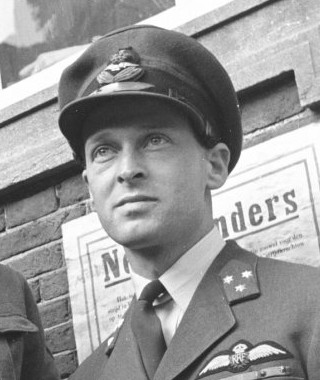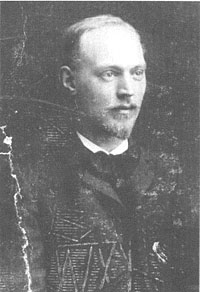
Dutch New Guinea or Netherlands New Guinea was the western half of the island of New Guinea that was a part of the Dutch East Indies until 1949, later an overseas territory of the Kingdom of the Netherlands from 1949 to 1962. It contained what are now Indonesia's six easternmost provinces, Central Papua, Highland Papua, Papua, South Papua, Southwest Papua, and West Papua, which were administered as a single province prior to 2003 under the name Irian Jaya, and now comprise the Papua region of the country.

Willem Drees Sr. was a Dutch politician of the Social Democratic Workers' Party (SDAP) and later co-founder of the Labour Party (PvdA) and historian who served as Prime Minister of the Netherlands from 7 August 1948 to 22 December 1958.

Arthur Seyss-Inquart was an Austrian Nazi politician who served as Chancellor of Austria in 1938 for two days before the Anschluss. His positions in Nazi Germany included deputy governor to Hans Frank in the General Government of Occupied Poland, and Reich commissioner for the German-occupied Netherlands. In the latter role, he shared responsibility for the deportation of Dutch Jews and the shooting of hostages.

Anton Adriaan Mussert was a Dutch politician who co-founded the National Socialist Movement in the Netherlands (NSB) in 1931 and served as its leader until the party was banned in 1945. As such, he was the most prominent Dutch leader of the movement before and during World War II. Mussert collaborated with the German occupation government, but was granted little actual power and held the nominal title of Leider van het Nederlandsche Volk from 1942 onwards. In May 1945, as the war came to an end in Europe, Mussert was captured and arrested by Allied forces. He was charged and convicted of treason, and was executed in 1946.

The Royal Netherlands East Indies Army was the military force maintained by the Kingdom of the Netherlands in its colony of the Dutch East Indies, in areas that are now part of Indonesia. The KNIL's air arm was the Royal Netherlands East Indies Army Air Force. Elements of the Royal Netherlands Navy and Government Navy were also stationed in the Netherlands East Indies.

Siebren Erik Hazelhoff Roelfzema was a Dutch writer who became a resistance fighter and RAF pilot during the Second World War. Near the end of the war he was adjudant (assistant) to Queen Wilhelmina. He was made Knight 4th class of the Military William Order. He is perhaps best known for his book Soldaat van Oranje which described his experiences in the war. His book was later made into a film. The book and the film about it eventually were made into the most successful Dutch musical ever, premiering 30 October 2010.

The Dutch resistance to the German occupation of the Netherlands during World War II can be mainly characterized as non-violent. The primary organizers were the Communist Party, churches, and independent groups. Over 300,000 people were hidden from German authorities in the autumn of 1944 by 60,000 to 200,000 illegal landlords and caretakers. These activities were tolerated knowingly by some one million people, including a few individuals among German occupiers and military.

The Jakarta Special Region is administratively equal to a province with special status as the largest city of Indonesia. Instead of a mayor, the executive head of Jakarta is a governor. The Governor of Jakarta is an elected politician who, along with the vice governor and 106 members of the Regional People's Representative Council (DPRD), is accountable for the strategic government of the city of Jakarta.

The Japanese Empire occupied the Dutch East Indies during World War II from March 1942 until after the end of the war in September 1945.

General Simon Hendrik Spoor was the Chief of Staff of the Royal Netherlands East Indies Army and the Royal Dutch Army in the Dutch East Indies, from 1946 to 1949, during the Indonesian National Revolution.

Johan Aaldrik (Han) Stijkel was an academic and a Dutch Resistance activist.

The Korps Commandotroepen (KCT) is the elite special forces unit of the Royal Netherlands Army. The KCT traces its origins to the Second World War with the founding of No. 2 (Dutch) Troop, and the founding of the Korps Speciale Troepen during the Indonesian War of Independence. At present, the unit is tasked with conducting the full spectrum of special operations, its principal tasks being direct action, special reconnaissance, military assistance and counter-terrorism.

Antonius Hermanus Johannes Lovink was a Dutch diplomat who served as the last High Commissioner of the Crown in the Dutch East Indies from May 1949 until 27 December 1949, the year the Dutch East Indies declared independence from the Netherlands, and renamed itself Indonesia. He was the son of former Member of Parliament Hermanus Johannes Lovink, who was also mayor of Alphen.
The Pontianak incident consisted of two massacres which took place in Kalimantan during the Japanese occupation of the Dutch East Indies. One of them is also known as the Mandor Affair. The victims were from a wide variety of ethnic groups, and the killings devastated the Malay elite of Kalimantan, with all the Malay Sultans of Kalimantan executed by the Japanese.

Wim van Norden was a Dutch journalist. He was one of the founders of the resistance paper Het Parool during World War II. He was jailed for six months by the Germans in 1942 but was later released due to lack of evidence for his involvement with Het Parool. Van Norden was active in the resistance for the remainder of the war. After the war he became director of the newspaper and although he originally planned to serve for only several months he kept his function until 1979. Van Norden was responsible for the founding of the publishing company Perscombinatie in which three newspapers worked together.

Willy Kruyt was a Dutch Protestant minister and Christian socialist, later Communist, politician.

Adriaan Nicolaas Johan van Hees was a Dutch actor and member of the National Socialist Movement in the Netherlands (NSB). Van Hees was trained in Amsterdam and Germany, and spent a few years in theater and film. He quit professional acting to join the NSB, giving speeches and overseeing the organization's theater division, arguing that the change he thought necessary in Dutch drama had to come from political revolution. He became depressed and suicidal when he discovered he was part Jewish; still, he tried to join the SS but was denied. After the war, he was banned from the stage for ten years, and sentenced to five years in prison.

Ernst Willem de Jonge was a lawyer and Olympic rower who volunteered to serve in the Dutch resistance during the Second World War. He was captured in May 1942, interrogated and moved through several concentration camps. He died in a prison in occupied by Germans Poland in September 1944.

Daniël "Daan" Goulooze was a Dutch Jewish construction worker who was a committed communist and resistance fighter. In 1925, he became a member of the Communist Party of the Netherlands (CPN) and by 1930 had become an executive member of the organisation. In 1934, he formed Pegasus, a publisher of many left-wing writers and intellectuals in the Netherlands, some for the first time. In 1935–1936, Goulooze formed the Dutch Information Service (DIS), an organisation that supplied information to the Soviet Union. Goulooze become the liaison between the organisation and the CPN. In 1937, he went to the Soviet Union, where he received intelligence training at the Marx–Engels–Lenin Institute in Moscow. Upon returning, he became the liaison officer of Communist International (Comintern) in the Netherlands, his main duty being to maintain on-going radio contact with Soviet intelligence.

Harald Poelchau was a German prison chaplain, religious socialist and member of the resistance against the Nazis. Poelchau grew up in Silesia. During the early 1920's, he studied Protestant theology at the University of Tübingen and the University of Marburg, followed by social work at the College of Political Science of Berlin. Poelchau gained a doctorate under Paul Tillich at Frankfurt University. In 1933, he became a prison chaplain in the Berlin prisons. With the coming of the Nazi regime in 1933, he became an anti-fascist. During the war, Poelchau and his wife Dorothee Poelchau helped victims of the Nazis, hiding them and helping them escape. At the same time, as a prison chaplain he gave comfort to the many people in prison and those sentenced to death. After the war, he became involved in the reform of prisons in East Germany. In 1971, Yad Vashem named Poelchau and his wife Righteous Among the Nations.


















